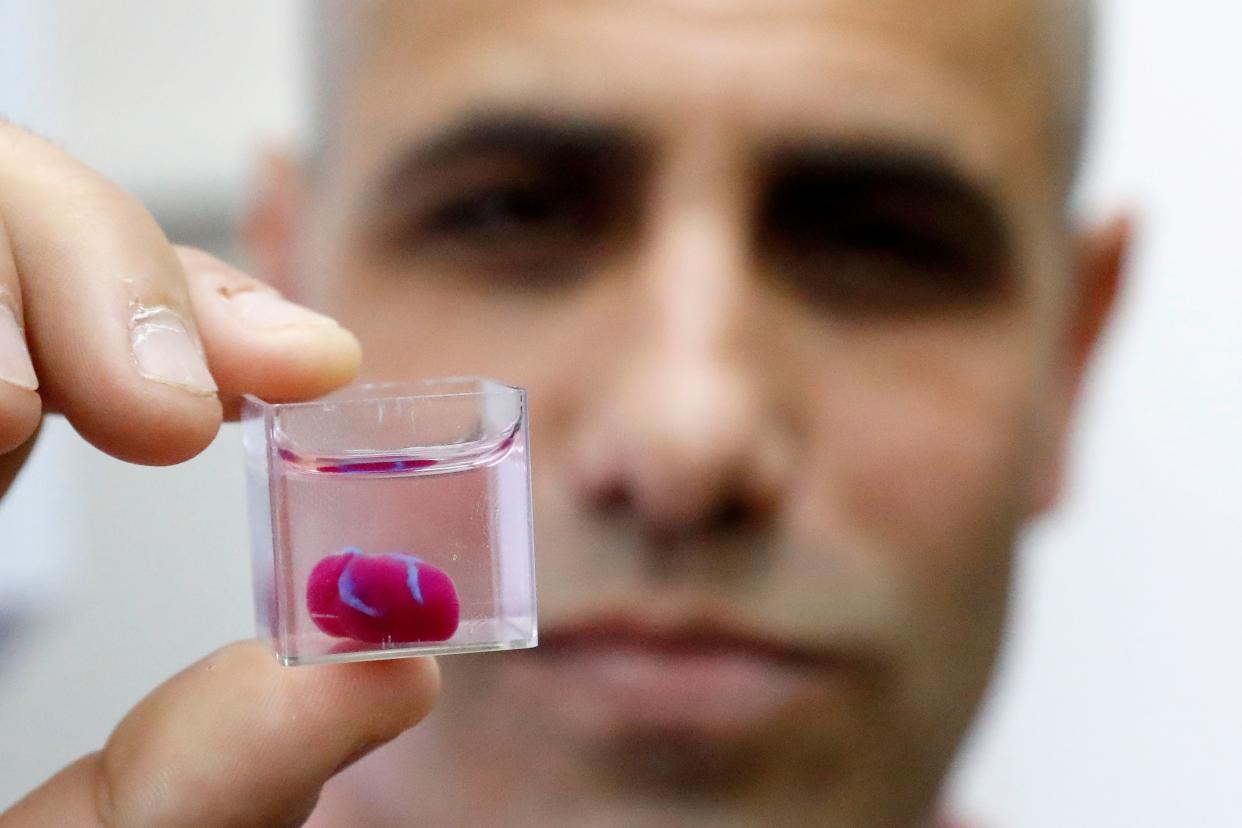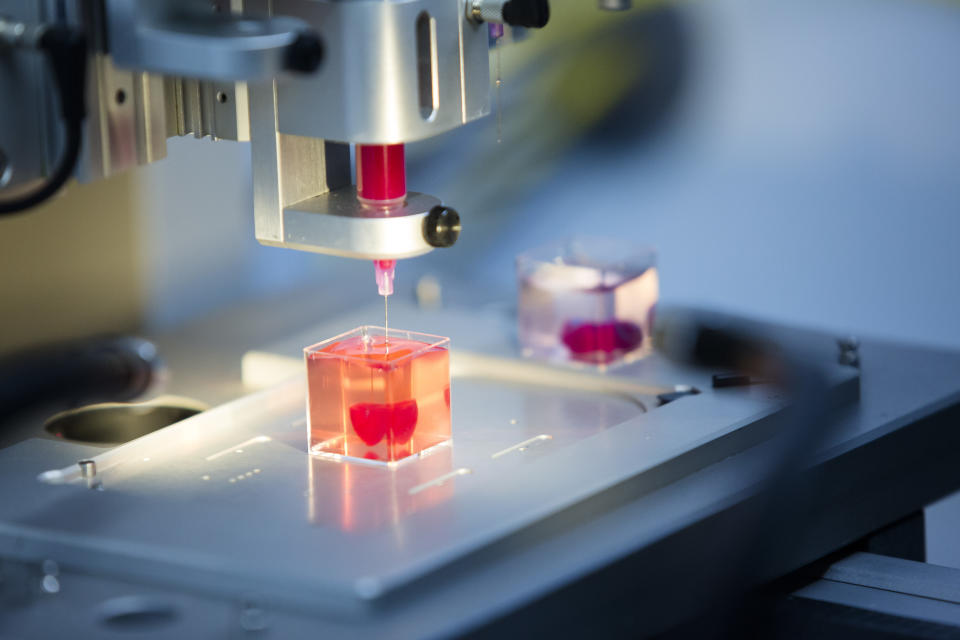Israeli Scientists Create First 3D-Printed Heart With Blood Vessels

Scientists at Israel’s Tel Aviv University say they’ve created the world’s first 3D-printed heart with human tissue and blood vessels.
Although the organ is only as big as a rabbit’s heart, the researchers are hoping the technology could one day be developed enough to help human patients in need of a heart transplant.
Lead researcher Tal Dvir said that while other scientists have managed to 3D-print the structure of a heart in the past, this is the first time anyone has printed an entire heart “replete with cells, blood vessels, ventricles and chambers.”
“Our results demonstrate the potential of our approach for engineering personalized tissue and organ replacement in the future,” Dvir said in a press statement on Monday.

The scientists’ research was outlined in a paper published in the peer-reviewed Advanced Science journal on Monday. They used fatty tissues taken from human patients to create the heart. The cellular material in the tissue was reprogrammed to become stem cells. The remaining extracellular material ― including molecules such as collagen, a protein that supports cell structure ― was processed into a hydrogel. The researchers used the hydrogel as a printing “ink.”
The end result was a tiny heart with properties that match the immunological, cellular, biochemical and anatomical properties of a specific patient.
This method is crucial to eliminating the risk that the implant will be rejected by the patient’s body, Dvir said.
The team’s next step is to cultivate the organs in a lab and to teach them how to “behave” like hearts, the researcher said. Dvir’s 3D-printed hearts can currently contract, but the cells still need to form a pumping ability. His team eventually plans to test the hearts in animal models.
“Maybe, in ten years, there will be organ printers in the finest hospitals around the world, and these procedures will be conducted routinely,” Dvir said.
Heart disease is the leading cause of death for both men and women in the United States, according to the Centers for Disease Control and Prevention. About 610,000 people die of this disease in America every year – amounting to about 1 in every 4 deaths. There are currently over 3,700 transplant candidates waiting for a heart transplant in the U.S., according to data from the U.S. Department of Health and Human Services.
This article originally appeared on HuffPost.


